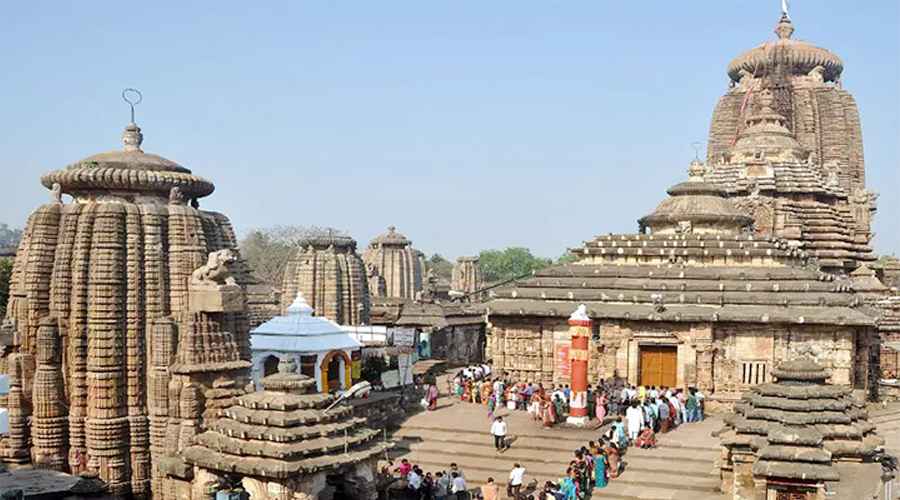The Lingaraj Temple, located in Bhubaneswar, Odisha, is one of India’s oldest and most architecturally significant Hindu temples dedicated to Lord Shiva. Built in the 11th century and standing at 180 feet tall, this temple is a monumental example of the Kalinga style of architecture and the syncretism of Shaivism and Vaishnavism. Here are the top 10 compelling facts about the Lingaraj Temple that many may not know:
1. Ancient Origins with Continuous Growth
Though the temple in its present form dates to the 11th century, evidence such as Sanskrit texts and inscriptions suggest that its origins may trace back to the 6th century CE. King Yayati I of the Somavanshi dynasty initiated the temple construction in the early 11th century, and subsequent rulers contributed over time, resulting in multiple expansions including the dance hall and offering hall added in the 12th and 14th centuries.
2. The Temple’s Architectural Grandeur
Lingaraj Temple exemplifies the Pancharatha style of temple architecture without a raised platform. It encompasses four main structures aligned on an east-west axis—the Vimanas (sanctum), Jagamohana (assembly hall), Natamandira (dance hall), and Bhoga-mandapa (offering hall). The towering 55-meter spire is intricately carved, demonstrating exceptional craftsmanship and architectural planning praised by historian James Fergusson as one of the finest Hindu temples in India.
3. A Unique Blend of Deities: Harihara
Unlike many Shiva temples, Lingaraj enshrines Lord Harihara, a syncretic form combining Shiva (Hari) and Lord Vishnu (Hara). This reflects the temple’s unique representation of the syncretism between Shaivism and Vaishnavism sects in Odisha, highlighting the cultural and religious harmony prevalent during its construction.
4. Swayambhu — The Self-Manifested Lingam
The primary deity is a Swayambhu, or self-originated, Shivalinga said to have naturally manifested beneath a mango tree still present at the temple complex. The Shivalinga measures about 8 feet in diameter and height, making it a significant object of worship and one of the largest of its kind in India.
5. The Temple’s Sacred Water Body: Bindu Sagar
Adjacent to the Lingaraj Temple lies Bindu Sagar, a holy lake believed to be created by Lord Shiva himself by gathering waters from all sacred rivers. The water is considered highly purifying and is believed to have healing properties. Devotees often take ritual baths in Bindu Sagar as part of their worship.
6. Complex Courtyard with Hundreds of Shrines
The temple complex is enclosed by a fortified laterite wall stretching 520 feet by 465 feet. Inside this enclosure, there are around 150 subsidiary shrines and numerous sculpted figures, including depictions of daily life, royal personages, musicians, and dancers. This large courtyard not only serves religious functions but also acted as a vibrant cultural hub historically.
7. Rich Symbolism in Sculptures and Carvings
Every inch of the towering spire and temple walls is covered with detailed sculptures portraying mythology, gods and goddesses, floral motifs, and scenes of everyday life. These carvings also include images of Lord Ganesha, Goddess Parvati, and Lord Kartikeya, representing the divine family, making the temple a holistic representation of Shaiva tradition.
8. The Emblematic Natya Mandapa and Dance Tradition
The temple features a Natya Mandapa or dance hall built during the reign of Salini’s queen around 1099 to 1104 CE. This hall was central to religious performances involving dance and music, integral to temple rituals. The rise of the devadasi system accompanied this feature, linking art forms directly with worship.
9. Festivals and Rituals of Grandeur
Lingaraj Temple is a hotspot for grand religious festivals like Mahashivaratri, Chandan Yatra, and Ashoka Astami. The latter includes a famous Rath Yatra procession drawing thousands of devotees. During Mahashivaratri, the temple sees massive crowds performing night-long rituals honoring Lord Shiva.
10. Historical Patronage and Continuity
Inscriptions found in the temple point to royal patronage by different dynasties, including generous grants and gifts like gold coins and sacred offerings. The temple’s priests and Brahmins have been recipients of village donations, demonstrating its importance as a religious and political center over centuries.
The Lingaraj Temple stands not only as an architectural marvel of the Kalinga school but also as a beacon of religious unity, art, and spiritual life in Odisha. Its blend of history, legend, art, and culture encapsulates centuries of devotion and creativity, making it an enduring symbol of Indian heritage.
This temple is a must-visit for those interested in the richness of Hindu temple architecture, the diversity of Indian religious traditions, and the living culture of Odisha. Its legends and mysteries continue to fascinate pilgrims and historians alike, preserving a timeless legacy in the heart of Bhubaneswar.



